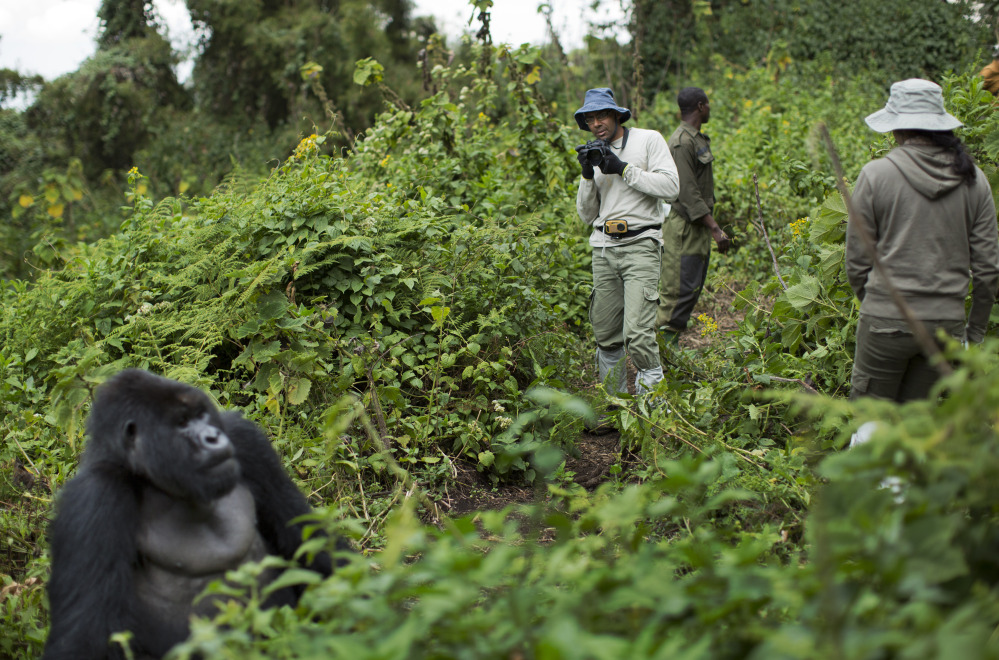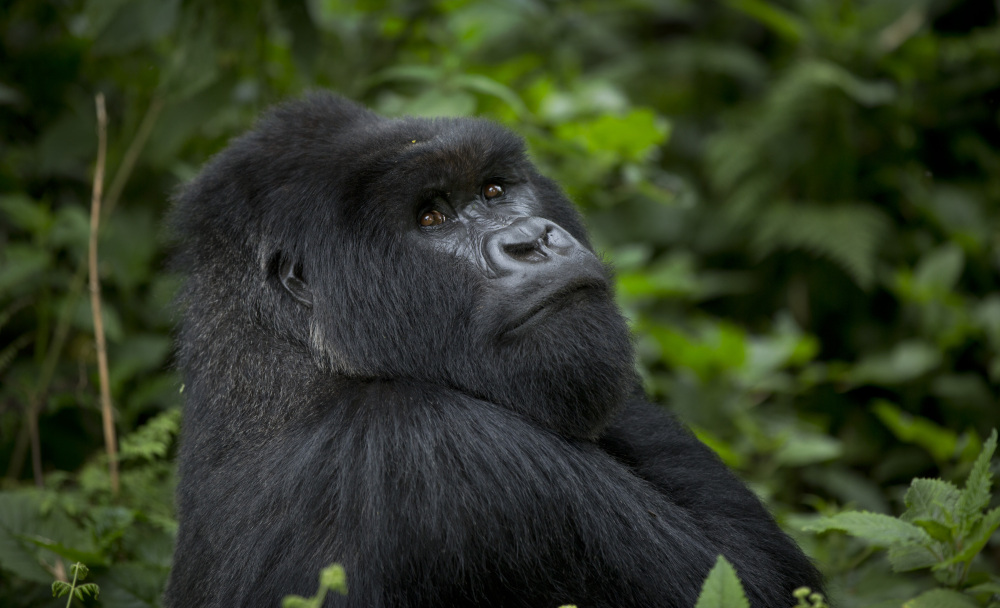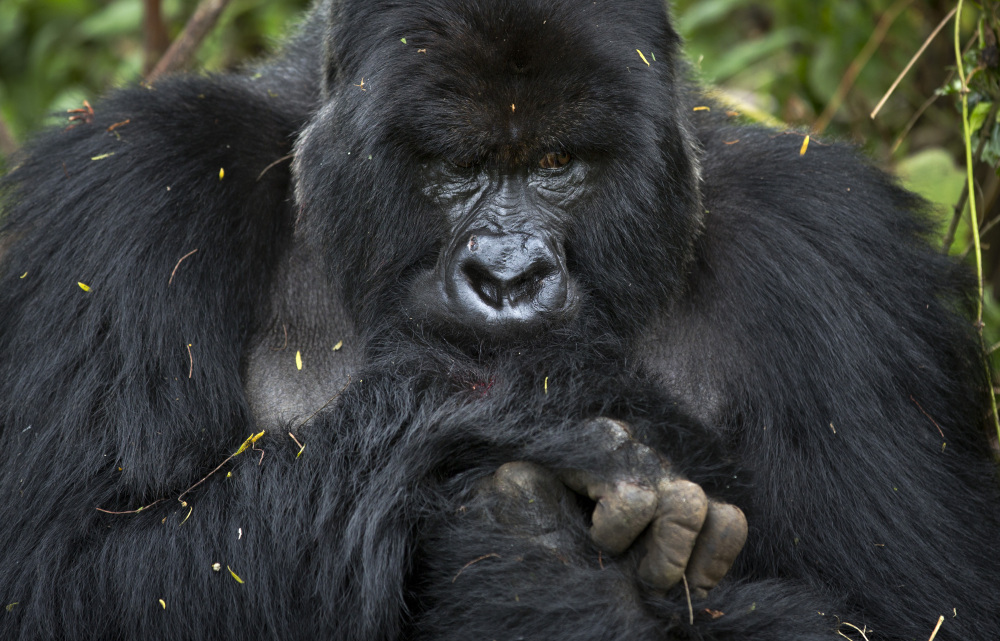VOLCANOES NATIONAL PARK, Rwanda — Deep in Rwanda’s steep-sloped forest, the mountain gorillas look both endearing and intimidating. A tourist might feel conflicting impulses to shy away and reach for a hug (the latter is not advised) when a gorilla brushes past on a path. The way a gorilla snoozes, scratches a leg or casts an inquiring glance – it all seems familiar, and yet wild.
“You can’t tell what they’re thinking,” said John Scott, a retired chemical engineer from Britain’s Worcester area who trekked to the high-altitude habitat to see the creatures with close genetic links to humans.
This sense of kinship helps explain why increasing numbers of tourists are heading to Rwanda’s Volcanoes National Park, fueling an industry seen as key to the welfare of the critically endangered subspecies as well as the national economy. Those visitors can also be a threat because gorillas are vulnerable to human diseases and so reduced in numbers that a veterinary team called Gorilla Doctors cares for sick and injured apes.
The mountain gorilla population dropped sharply in the last century because of poaching, illness and human encroachment, although the numbers are now rising. These days, an estimated 900 mountain gorillas live in Rwanda and neighboring Congo and Uganda.
In Rwanda, conservation is big business. Eighty individual permits to see the gorillas for one hour are available daily for a maximum price of $750 each, and 20 percent of permit revenue goes to schools, clinics and other local community projects, the park website says.
More than 20,000 people visited Rwanda’s gorillas in 2014, nearly three times as many as in 2003, according to government figures. Many came from the United States, Britain, Australia, Germany and Canada. Last week, people in hiking gear sipped coffee and milled around at the park headquarters before breaking into groups of eight, the limit for tourist parties visiting separate gorilla families in the dense undergrowth.
“How’s the pace? Are you feeling the mountains yet or not?” guide Ferdinand Ndamiyabo asked his group, including an Associated Press team, during a hike up a volcano that is home to a family of gorillas called Amahoro, which means “peace” in the Rwandan language. It took close to two hours of walking to reach the gorillas, a relatively gentle climb in mild weather through tangled vines, stinging nettles and other lush vegetation.
Ndamiyabo earlier laid out rules for the encounter: Don’t point, speak softly, don’t cough or sneeze in the animals’ direction and stay a minimum of 23 feet away. If a gorilla approaches, crouch down, don’t make eye contact and make a low sound similar to that of clearing the throat, which gorillas use to express friendliness.
What awaited in a clearing were drowsy gorillas, including two young ones that idly grappled and another that groomed Gahinga, an adult male silverback that dominates the Amahoro.
Sarah Scott, a nurse and wife of tourist John Scott, said the close encounter was awe-inspiring.
Send questions/comments to the editors.





Success. Please wait for the page to reload. If the page does not reload within 5 seconds, please refresh the page.
Enter your email and password to access comments.
Hi, to comment on stories you must . This profile is in addition to your subscription and website login.
Already have a commenting profile? .
Invalid username/password.
Please check your email to confirm and complete your registration.
Only subscribers are eligible to post comments. Please subscribe or login first for digital access. Here’s why.
Use the form below to reset your password. When you've submitted your account email, we will send an email with a reset code.